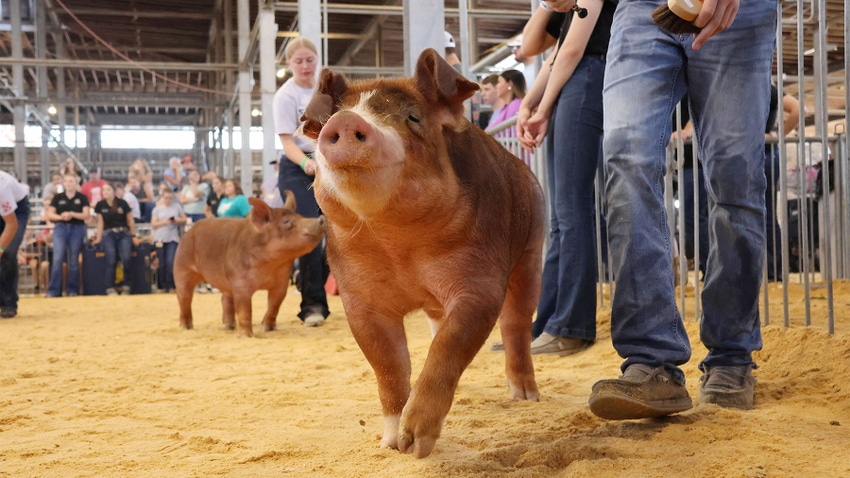
Missouri 4-H and FFA livestock exhibitors will need to pluck a few hairs from their animals before entering the state fair competition this year.
The Missouri State Fair announced changes to its DNA-testing methods for market animals, doing away with nose prints and blood samples and turning to hair follicle analysis. DNA collection allows the state fair to match the market animal with the exhibitor, a proof of ownership to ensure a level of trust in the competition process.
“It was time for the Missouri State Fair to make the switch and be up to date with the fair industry as a whole,” says Rhiannon Birdwell, competitive entry supervisor for the state fair.
She notes that other fairs within the region — such as Kansas, Nebraska and Iowa — no longer use nose prints or blood testing. “Everyone has been using hair follicle testing for several years,” she says.
Path to change
Discussion over a change in DNA testing started in 2023, with a committee comprised of all the livestock superintendents for the state fair.
Initially, Birdwell says the committee leaned toward pulling blood samples, a practice already done in the swine barn, but she could not find labs to accommodate the amount or type of blood samples for such a large fair.
“Most labs didn’t want just a blood card; they wanted an actual vial of blood,” she says, “and they wanted it within a certain number of hours.”
So, the committee looked at hair follicle sampling, which Birdwell says is more reliable, safe and convenient for exhibitors, FFA advisors, 4-H leaders and veterinarians.
“This is a more modernized form of DNA analysis,” she explains. “It is noninvasive, and there is more of a comprehensive detection range.”
The Missouri State Fair Commission agreed and approved the change for 2024.
Understand new sampling process
Exhibitors, family members, project leaders or veterinarians can collect the hair sample. However, agriculture teachers or Extension agents must be present and provide a signature certifying that it was taken from the entered animal in their presence, and that the animal entered is owned by the exhibitor.
Here are the instructions for pulling hair and placing it in a hair-sample envelope:
Pull hair with root follicles attached.
Hair should be dry.
If hair has excess dirt and debris, please brush it out if possible.
Do not cut the hair; the roots contain the DNA for testing.
Use fingers or pliers to grasp approximately 8-10 hairs close to the skin and pull.
Repeat until you have about 20-30 hairs with root follicles attached.
Place 20-30 hairs with root follicles attached in a regular No. 10 envelope. Seal envelope.
Clean hands or pliers before sampling another animal.
The DNA sample and collection data form must be returned to the Missouri State Fair by the agriculture instructor or Extension agent.
DNA sample deadlines
Market steers and heifers. Postmarked by March 15
Market barrows. Postmarked by May 15
Market lambs and wether goats. Postmarked by June 15
Where to pluck hairs by species
Cattle. Switch of tail, poll or neck
Goats. Coarse hair from hoof, neck or tail area
Swine. Coarse hair from body, tail area, between toes or inside ear
Sheep. Coarse hair from hoof or body area
About the Author(s)
You May Also Like






